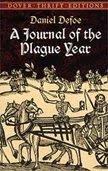by Charles Kinglsey
 The protagonist of this book is Tom, a naughty young boy who works under a cruel master as a chimney sweep. One day he gets himself into trouble, runs away and falls into a river where he is transformed into a \”water-baby\”, able to live among the fishes. Tom is anxious to meet other water babies, but first he has to learn to be nice and well-behaved. He meets a lot of underwater animals- otters, lobster, different kinds of fishes- and fairies. Through his interactions in the underwater world, Tom slowly learns his moral lessons, eventually going off to save his old master from punishment for wrongdoings, and making his way back to land. My main enjoyment of the story is in the unfolding of Tom\’s character- he\’s quite a cheeky boy, curious and unafraid to ask questions of anyone (although the answers often puzzle him at first). His transformation out of ignorance and selfishness is nicely done. I also like reading about all the different creatures Tom encounters- their personification mostly reflects the natural behavior of said animals, and it\’s not many books you come across that feature talking salmon, lobsters and dragonflies. A delightful book, but one that I think should be read with the outlook of its time well in mind.
The protagonist of this book is Tom, a naughty young boy who works under a cruel master as a chimney sweep. One day he gets himself into trouble, runs away and falls into a river where he is transformed into a \”water-baby\”, able to live among the fishes. Tom is anxious to meet other water babies, but first he has to learn to be nice and well-behaved. He meets a lot of underwater animals- otters, lobster, different kinds of fishes- and fairies. Through his interactions in the underwater world, Tom slowly learns his moral lessons, eventually going off to save his old master from punishment for wrongdoings, and making his way back to land. My main enjoyment of the story is in the unfolding of Tom\’s character- he\’s quite a cheeky boy, curious and unafraid to ask questions of anyone (although the answers often puzzle him at first). His transformation out of ignorance and selfishness is nicely done. I also like reading about all the different creatures Tom encounters- their personification mostly reflects the natural behavior of said animals, and it\’s not many books you come across that feature talking salmon, lobsters and dragonflies. A delightful book, but one that I think should be read with the outlook of its time well in mind.
For The Water Babies is a didatic tale, heavily reflecting the Victorian ideas of its time. It is full of stiff moral lessons, crammed with Christian perceptions of guilt and redemption, and spouts off a lot of prejudiced criticisms of different groups of people- including Jews, Catholics, Americans and the Irish (these parts have mostly been edited out of later versions). I am not sure if I have ever read an unabridged version. And although it is usually classed as a children\’s book, I don\’t know if I\’d feel comfortable reading it to my daughter without verbally editing some of those heavily opinionated passages. It\’s very interesting to read the wiki article about this book, which tells me that among other things, Kingsley wrote The Water Babies as a piece of satire, much akin to Alice\’s Adventures in Wonderland, although the flavor of this story feels more like Peter Pan to me. Moralism and satire aside, it\’s a tender and curious story, full of interesting characters and lively adventures.
Rating: 4/5 316 pages, 1863
More opinions at:
BookNAround
cucullus non facit monachum








